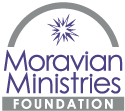The Moravian Ministries Foundation in America (MMFA) is pleased to share the following list of stewardship strategies and tips for pastors and stewardship leaders. Over the past weeks we have spent time reading articles from our ecumenical partners and attending webinars, online meetings and conferences, as well as looking at what we know to be true for stewardship in the Moravian Church based on our twenty plus years of experience.
If you would like to speak with someone about how MMFA might be able to help with stewardship in your ministry context, please contact Laura Watson, Director of Stewardship Services (lwatson@mmfa.info or 336-725-2589). We offer tools such as a stewardship health assessment, language that can be used in your ministry’s communications and much more.
Steps For Continuing to Nurture Generous Stewards During a Pandemic
- Care for one another. Provide ways to cope and offer hope. People need to voice their feelings, so listen. People also want to help others, so be sure they are able to do so. Phone calls and written notes will continue to be crucial over the months ahead, as will opportunities for people to pray together online as well as for one another from home. Consider identifying a congregational time of prayer during the week and invite everyone to pray for the community of faith at that time, or offer an online time of prayer.
- Focus on your ministry’s core mission and values. In her article External Shocks, Meredith McNabb of the Lake Institute on Faith and Giving, shares:
“The first response to seeing participation and/or giving numbers that have nose-dived cannot be simply to say “But the congregation has needs!” and to plead for members to show up (virtually for now, of course) and open their wallets and keep the enterprise afloat. The focus has to be on the core mission and values: why does the congregation exist? What is the spiritual, transformational, life-giving, and meaning-making work that caused the congregation to gather in the first place?”
In the face of so many changes, your church’s mission and core beliefs are still the same; they are still your foundation. Focus and build on that solid foundation.
- Communicate. Avoid “church survival mode” type messaging and instead share how people are being cared for during this time, as well as the impact of people’s stewardship. Two ways to do this are: “Here’s how your financial gifts are making a difference in our community” and “Here’s how our church is helping with gifts of time and talent”. Remind people that their monetary contributions do more than just enable the church to pay its bills; they also provide vital funds to shared ministries such as our Moravian camps, agencies like Sunnyside and Moravian Open Door that help vulnerable populations, and much more.
- Discern and adapt. This is perhaps the hardest step to take. We all long to go back to “what was” and everything we loved and now miss about our communities of faith; however, the world has changed drastically. If your church’s past stewardship strategies included actions that were rooted in a physical space or that counted on a large group of people being together, you already know that you have to think differently. Ask:
Are our stewardship practices meaningful because they’re familiar and comfortable or because they’re making a difference?
Does it make sense to keep asking people to give of time, talent, or treasure in the same ways or for the same programs and ministries? Are your heels dug in or are your feet on the move?
These four steps were shared in MMFA’s “Stewardship in the Midst” webinar; to view a recording of the webinar or to download its slides, visit our website here.
Other Areas to Consider
- Ask, “What have we as a community of faith learned about ourselves over the past few months?” Don’t unlearn it.
- Take what you’re doing online with you as you plan to resume in-person worship. In this article from the Ecumenical Stewardship Center, Marcia Shelter shares 7 ways to transition your church giving moment.
- Plan for continued engagement outside the church walls, both with the existing congregation as well as with the community. How are you renewing relationships with members? Are you building new relationships and collaborating with other organizations? The Church has a unique opportunity to lead the way in helping improve the lives of those around us; as Nathan Kirkpatrick of Alban at Duke Divinity recently said, “The concerns of the Gospel and the heartbeat of God is for all people.” How is your ministry involved in relief, recovery, and restoration?
Final Thoughts
Weeks ago I heard someone exclaim, “We’re building the planes while we’re flying them!” and I understood the sentiment; in fact, it still feels that way today. But the good news is that the Good News of God found in Jesus Christ has not changed, nor has our commitment to our church, its mission, and one another. We face uncertainty ahead, we are experiencing grief and loss, we are having hard conversations, and we are making tough decisions as individuals, families, and communities of faith.
But we’re also living into a new future, where there is room for imagination and creativity, and where there is also plenty of hope and promise. God is with us in the midst of it all, calling us to be and become. As we continue moving through this liminal season, let us remember God’s hand is always in ours. May we trust in God’s promise to always provide for us so that we can strive to be faithful stewards and the hands and feet of Christ in all we do.


